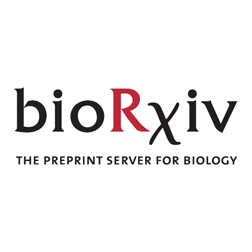Deep Learning-Based Prediction of Decoy Spectra for False Discovery Rate Estimation in Spectral Library Searching https://pubs.acs.org/doi/10.1021/acs.jproteome.4c00304
---
#proteomics #prot-paper
Deep Learning-Based Prediction of Decoy Spectra for False Discovery Rate Estimation in Spectral Library Searching https://pubs.acs.org/doi/10.1021/acs.jproteome.4c00304
---
#proteomics #prot-paper
Alternative and cost-effective adsorbent for detergent removal in membrane protein solubilization https://www.researchsquare.com/article/rs-6252728/v1
---
#proteomics #prot-preprint
Membrane proteins (MPs) are essential for various cellular functions and therefore critical targets for the drug industry. However structural and functional studies of MPs are challenging due to the difficulty and cost of solubilization and purification. Effective solubilization typically requ...
Effects of In Vitro Hemolysis and Repeated Freeze–Thaw Cycles in Protein Abundance Quantification Using the SomaScan and Olink Assays https://pubs.acs.org/doi/10.1021/acs.jproteome.5c00069
---
#proteomics #prot-paper
The AI revolution comes to protein sequencing https://www.science.org/content/article/ai-revolution-comes-protein-sequencing?utm_source=pocket_saves
---
#proteomics #prot-article
Assessing the relation between protein phosphorylation, AlphaFold3 models and conformational variability https://www.biorxiv.org/content/10.1101/2025.04.14.648669v1.full.pdf+html
---
#proteomics #prot-preprint

Proteins perform diverse functions critical to cellular processes. Transitions between functional states are often regulated by post-translational modifications (PTMs) such as phosphorylation, which dynamically influence protein structure, function, folding, and interactions. Dysregulation of PTMs can therefore contribute to diseases such as cancer and Alzheimer′s. However, the structure-function relationship between proteins and their modifications remains poorly understood due to a lack of experimental structural data, the inherent diversity of PTMs, and the dynamic nature of proteins. Recent advances in deep learning, particularly AlphaFold, have transformed protein structure prediction with near-experimental accuracy. However, it remains unclear whether these models can effectively capture PTM-driven conformational changes, such as those induced by phosphorylation. Here, we systematically evaluated AlphaFold models (AF2, AF3-non phospho, and AF3-phospho) to assess their ability to predict phosphorylation-induced structural diversity. By analysing experimentally derived conformational ensembles, we found that all models predominantly aligned with dominant structural states, often failing to capture phosphorylation-specific conformations. Despite its phosphorylation-aware design, AF3-phospho predictions provided only modest improvement over AF2 and AF3-non phospho predictions. Our findings highlight key challenges in modelling PTM-driven structural landscapes and underscore the need for more adaptable structure prediction frameworks capable of capturing modification-induced conformational variability. ### Competing Interest Statement The authors have declared no competing interest.
An integrated landscape of mRNA and protein isoforms https://www.biorxiv.org/content/10.1101/2025.04.16.648713v1.full.pdf+html
---
#proteomics #prot-preprint

Alternative splicing and proteolytic processing expand the functional diversity of the human proteome by generating distinct protein isoforms from a single gene. However, the extent to which transcript isoforms give rise to distinct protein products remains unclear, in part due to technical limitations in proteomic workflows. Here, we combine full-length mRNA sequencing with SDS-PAGE-based protein fractionation and quantitative mass spectrometry to construct an integrated landscape of mRNA and protein isoforms in human RPE-1 cells. To overcome the inherent ambiguity of bottom-up proteomics in isoform detection, we developed IsoFrac, a computational pipeline that resolves protein isoforms based on their migration profiles across gel fractions. This approach enabled the identification of ~45,000 full-length transcripts, ~32,000 ORFs, and ~16,000 distinct protein isoforms. Comparative analyses revealed widespread translation of alternative transcripts and uncovered proteolytic processing as a major, underappreciated source of proteome complexity. Our results establish a scalable framework for isoform-resolved proteogenomics and provide a reference resource for studying the molecular diversity encoded by the human genome. ### Competing Interest Statement The authors have declared no competing interest.
MegaPX: fast and space-efficient peptide assignment method using IBF-based multi-indexing https://www.biorxiv.org/content/10.1101/2025.04.14.648734v1.full.pdf+html
---
#proteomics #prot-preprint
Dried Spot Paradigm: Problems and Prospects in Proteomics https://www.mdpi.com/1422-0067/26/8/3857
---
#proteomics #prot-paper
SysQuan: repurposing SILAC mice for the cost-effective absolute quantitation of the human proteome https://www.sciencedirect.com/science/article/pii/S1535947625000726?dgcid=rss_sd_all
---
#proteomics #prot-paper